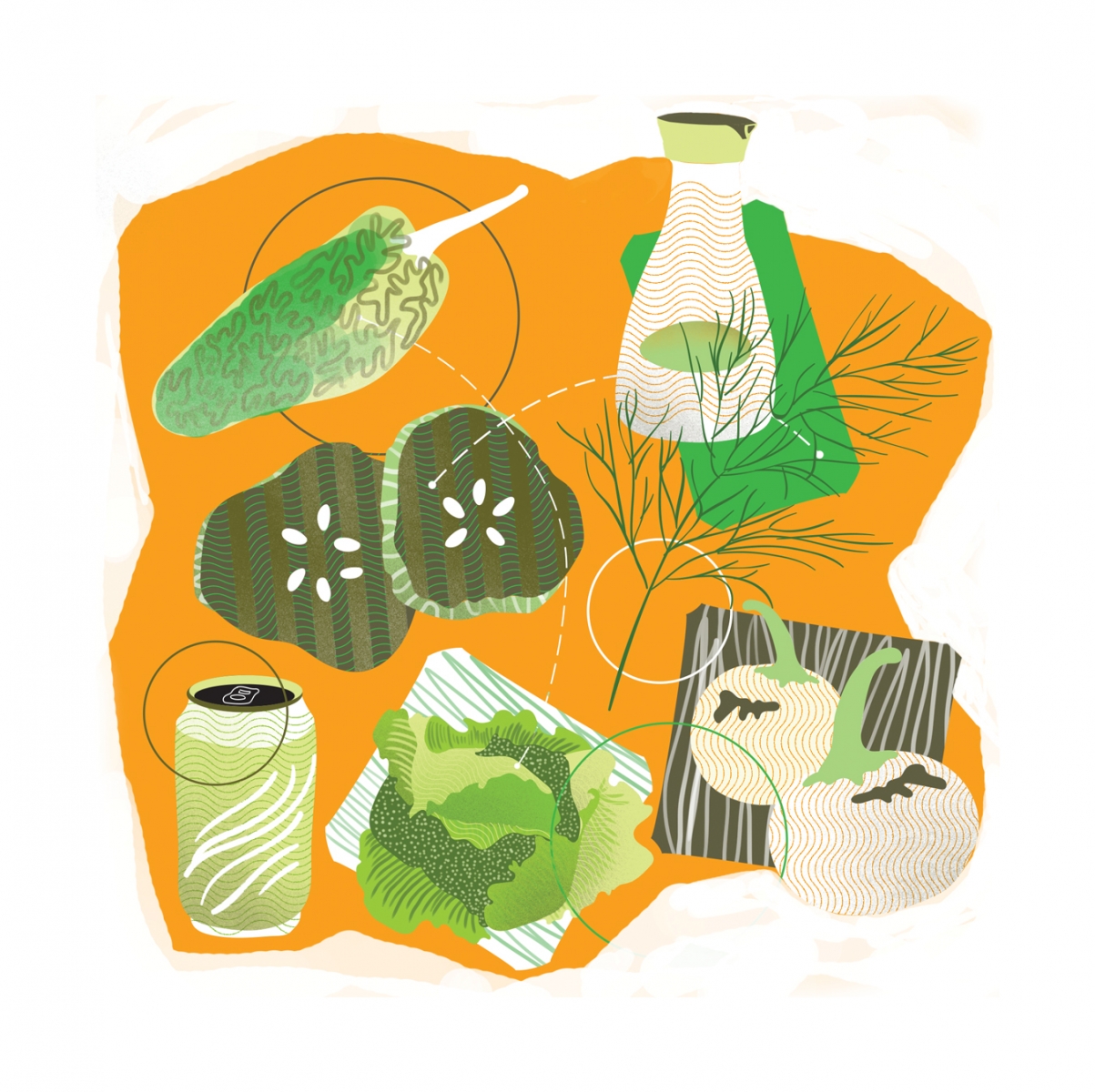Amere garnish to some, foundational ingredient to others. In Edmonton, house-made pickles and preserves are now the norm, not the exception, as chefs of both haute and humble cuisine experiment with a new generation of preservation.
Bar Clementine has only been open for a few weeks, but the new bistro/cocktail bar has already established itself as a bastion of preserved foods. Chef Roger Letourneau’s menu is heavily based on preservation, including various lacto-fermented items, two-year-old unpressed soy sauce, house-made miso, vinegars and sourdough. He learned these techniques while working in Belgium.
“My parents’ generation lost the necessity to cellar their vegetables or pickle everything for the winter; it was never part of their lifestyle,” Letourneau says. “I think it’s not really a fad as much as exposing people to what’s already being done and has been done for thousands of years.”
Letourneau uses fermentation to imbue his foods with a depth of flavour that wouldn’t otherwise exist. He also notes that there are some cost savings – though not so much that really justifies doing it on those grounds alone. It’s really more about the quality that you can only achieve when you make these items yourself, as well as the health benefits from eating living, unprocessed foods.
Chef Levi Biddlecombe agrees. Through his food truck, Attila the HUNgry, he’s gained a reputation for wild pickle experiments, like Orange Crush cabbage and Dr. Pepper daikon; he recently turned a lemongrass lemonade into pickling liquid.
“It gives me a chance to brighten up all of my dishes,” Biddlecombe says, explaining that his pickles are a fundamental ingredient providing acidity, texture and balance.
His pride and joy is his two-year old kimchi, which he treats like a sourdough starter and continually feeds for an endless supply. “It just gets better and better,” he says. “People start to notice the differences.”
